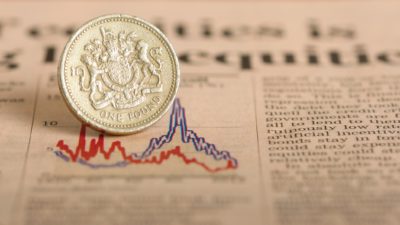Ticketing website operator Trainline (LSE: TRN) has been stuck in the sidings for a while now. Over the past year, the share price has fallen 18%, at the time of writing this article earlier today.
With strong brand recognition and a significant presence in its home market, could the company be a good play on economic recovery? Here I look at the bull and bear cases for Trainline.
Bull argument 1: demand recovery
The key reason the Trainline share price has struggled over the past couple of years is the unexpected dent in demand which resulted from the pandemic. That cut leisure travel, as well as commuting and business travel. While demand is still subdued, there are reasons to be optimistic that it is returning.
In Trainline’s interim results released last week, the company reported that net ticket sales had increased 179% compared to the prior year period, reaching £1bn. Revenue also soared. It was 151% higher, at £78m. Sustained demand recovery could help Trainline revenue grow. That should be positive for the company’s profitability – and the Trainline share price.
Bull argument 2: scaleable model
The company has spent years building its technology platform. Although initially built to service the UK train market, over time it has come to include other markets and modes of transport. Its broadly scaleable nature should enable Trainline to expand internationally. As it does so, without having to reinvent the wheel each time, profitability should hopefully increase.
In the first half, for example, the company highlighted “significant headroom for growth in Europe”. Its Italian business saw net ticket sales in the second quarter almost double compared to the equivalent period two years ago, before the pandemic. New entrant carriers in the Madrid-to-Barcelona corridor saw Trainline transactions on the route triple in the second quarter, compared to two years before.
Bull argument 3: pricing power
Trainline is in a decent financial position in my view. At the interim stage net debt stood at £169m, which I regard as manageable.
As its transaction fee only represents a small percentage of the cost of some train tickets, it has substantial pricing power. In other words, it can increase its take and thus substantially boost its profit margin, without customers necessarily seeing a large increase in the total transaction value. If the company stays the course, it could be very profitable at some stage. So far, though, that remains a distant hope more than a demonstrated reality.
Bear argument 1: business model is vulnerable
My biggest concern about the Trainline share price is its business model. It basically acts as a fare aggregator and sales platform. That model has worked well for a host of companies, from Priceline to Booking. But it comes with risks. Trainline lacks control over the services it sells and pricing is typically set by the operators.
That means that unless Trainline adds value for customers, operators could seek to cut it out of the sales process. The vulnerability in the model became clear in the pandemic, when the UK government subsidised train and bus companies to run services, but not ticketing companies to sell tickets. That made me feel that policymakers felt a company like Trainline wasn’t an essential part of travel infrastructure. If there is a sustained drop in demand again for any reason, that sentiment could cost Trainline dearly.
Bear argument 2: Trainline’s key market could vanish
The Trainline share price has also been hurt by speculation that the UK government may launch its own ticketing platform.
I actually think this concern has been overdone. As the shambles of track and trace has shown, IT projects are not a strength of the government. Even if it did attempt to build such a platform, the obvious place to look for expertise would be Trainline itself. So I actually think the company could ultimately benefit from any such move if it transpires. But not all analysts see things this way, which is why the Trainline share price crashed 30% in a day in May when the idea was mooted. If the UK government does launch its own venture and protects it through regulation, Trainline could ultimately be locked out of its biggest market.
Bear argument 3: Trainline share price is bad value
I think one of the most convincing bear arguments about Trainline pertains to its value.
Recall that in the first half, while train ticket sales touched a billion pounds, the portion of that which came Trainline’s way as revenue was just £78m. The company recorded an operating loss of £9m. These strike me as fairly small numbers for a company whose current stock market capitalisation suggests it is worth £1.6bn.
The company has been consistently loss-making since it floated a couple of years ago. Even in 2020, before the pandemic, its revenue was only £220m. That is not insubstantial, but it’s a lot less than the current market capitalisation.
Based on that, I don’t think the current Trainline share price is good value for my portfolio. The former CEO sold £412,000 of shares earlier this year when the Trainline share price stood at £4.90. They sit far below that now. There was a spurt of director buying in May, at share prices between £2.68 and £4.38.
My next move on the Trainline share price
I do see good arguments both for and against Trainline at its current price.
The risks concern me, though. The valuation looks steep and recovery is not assured. Many people who took trains before the pandemic have changed their lives or working patterns, so demand recovery is not guaranteed.
The company’s lack of control over passenger numbers or ticket pricing means that it is largely beholden to the decisions of third parties such as train companies and regulators. Their interests in many cases may be divergent from Trainline’s, but there is little or nothing the company can do about it. So when weighing the risks, I feel I can find better value and more attractive business models elsewhere in the market. I don’t plan to add Trainline to my portfolio.







